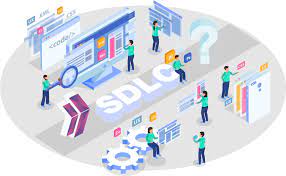The Evolution of SDLC :Navigating Software Development in 2023
As we step into 2023, the landscape of software development is rapidly evolving, driven by technological advancements and changing market demands. The Software Development Life Cycle (SDLC) has been a cornerstone of this transformation, providing a structured framework for creating, testing, and deploying software. In this blog, we will explore how SDLC has evolved in 2023 and how organizations are adapting to these changes to deliver innovative and high-quality software products.

1. Agile Dominance
Agile methodologies have been a driving force in software development for several years, but in 2023, they have firmly established their dominance. Agile practices, such as Scrum and Kanban, are now the standard approach for many development teams. They emphasize iterative development, collaboration, and customer feedback, enabling teams to respond quickly to changing requirements and deliver value faster.
2. DevOps Integration
The integration of Development (Dev) and Operations (Ops) has become a fundamental part of SDLC. DevOps practices, including continuous integration, continuous delivery (CI/CD), and automation, have streamlined the software delivery pipeline. In 2023, organizations are increasingly adopting DevOps principles to improve collaboration, reduce manual tasks, and enhance software quality.
3. AI and Machine Learning
Artificial Intelligence (AI) and Machine Learning (ML) are playing a significant role in SDLC. They are being used to automate testing, optimize code, and even assist in requirements analysis. AI-powered tools can identify patterns, predict defects, and provide valuable insights that aid developers and testers in their tasks.
4. Low-Code and No-Code Development
Low-code and no-code development platforms have gained popularity in 2023, enabling organizations to build applications with minimal hand-coding. These platforms empower citizen developers and business users to participate in the software development process, accelerating application delivery and reducing development costs.
5. Cloud-Native Development
Cloud-native development has become the norm, with software designed to leverage cloud infrastructure and services. Microservices architecture, serverless computing, and containerization are prevalent in 2023, enabling scalability, flexibility, and cost-efficiency in software deployments.
6. Security by Design
In 2023, security is no longer an afterthought in SDLC. Security practices are integrated from the beginning, with threat modeling, code scanning, and vulnerability assessments becoming standard procedures. Organizations prioritize secure coding and regularly update dependencies to mitigate risks.
7. User-Centric Design
User-centric design and User Experience (UX) have gained prominence. SDLC in 2023 places a strong emphasis on understanding user needs and preferences, resulting in more intuitive and engaging software interfaces.
8. Remote Collaboration
The COVID-19 pandemic accelerated the trend toward remote work, and in 2023, remote collaboration tools and practices are integral to SDLC. Development teams collaborate seamlessly across geographical boundaries, making the best use of talent worldwide.
9. Blockchain Integration
Blockchain technology is being integrated into SDLC for secure and transparent data management. It is particularly relevant for applications requiring immutable records, such as financial systems and supply chain management.
10. Sustainability Considerations
Sustainability has become a key factor in SDLC. Organizations are mindful of the environmental impact of software development and are adopting practices to reduce energy consumption, optimize code for efficiency, and minimize waste.
As we enter 2023, the Software Development Life Cycle has evolved significantly to meet the demands of a fast-paced and technologically advanced world. Agile methodologies, DevOps practices, AI, low-code development, cloud-native architecture, and security-first approaches are at the forefront of SDLC. These advancements empower organizations to develop software that is not only innovative but also of high quality and security.
In the coming years, we can expect further evolution as emerging technologies continue to shape the software development landscape. Organizations that embrace these changes and adapt to the evolving SDLC trends will be better equipped to deliver software solutions that meet the needs of the modern digital era.






